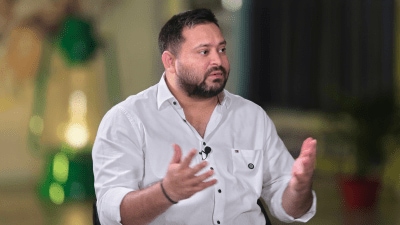Slow flight from death row
TO save the last of India’s vultures on death row, even an old-fashioned tool like gum on bamboo is fine if it leads to a bird in hand....

TO save the last of India’s vultures on death row, even an old-fashioned tool like gum on bamboo is fine if it leads to a bird in hand.
The struggle to return the large, critically endangered birds of prey to Mumbai’s Tower of Silence or the hills of Haryana now pins hope on trapping—with sticky bamboos—a target 150 survivors from north Bengal for conservation breeding.
‘‘It’s hard work. We can trap about one vulture in 10 days,’’ says ornithologist Vibhu Prakash, among the first to shadow the drooping, sick birds a decade ago. ‘‘Trapping permission is expected next month.’’
But persistent reports of dying birds and ongoing postmortems of 1,500 livestock carcasses indicate a slow return to flight—beyond 2020.
Every fortnight researchers visit vulture nests nationwide, as far as Kerala or Assam, to monitor eggs. They still return with stories of dead chicks in nests, or parents dead nearby.
‘‘We record very high mortality when juveniles leave nests,’’ says Prakash, also principal scientist, Bombay Natural History Society (BNHS) at the conservation breeding centre for vultures at Pinjore, Haryana. ‘‘Breeding success, an indicator of the population’s health, is low in all colonies.’’
|
Lethal Lunches
|
|
|
BNHS, supported by the Royal Society for Protection of Birds, Wildlife Institute of India and University of Aberdeen is analysing diclofenac prevalence on 1,500 livestock carcass samples from Maharashtra, Gujarat, Rajasthan, Haryana, Uttar Pradesh, Madhya Pradesh. |
Neither are Pinjore’s 42 captive vultures starting families.
‘‘Breeding will start only five-six years from now,’’ says Prakash. ‘‘Initially, we got only sick birds. And juveniles breed only when four or five years old.’’
Since the Nineties, traces of the veterinary drug diclofenac in livestock carcasses were a major cause of a wipe-out of almost 97 per cent of India’s Gyps species of vultures.
Trends from 2000-2003 indicate a 22-50 per cent annual decline for the oriental white-backed vulture and long-billed vulture, says Nita Shah, wildlife biologist with BNHS at Delhi.
BNHS teams now await sanction to trap 150 vultures this summer, for a second centre near Bengal’s Buxa Tiger Reserve. The target—25 pairs each of White-backed, Slender-billed and Long-billed vultures per centre.
Stealthy teams with 20-metre-long, collapsible bamboos will move close to feeding vultures. The bamboo ends—coated with gum made of latex and mustard oil—stick to feathers for easy trapping.
‘‘Fifteen years ago I would have never believed vultures could face extinction,’’ says BNHS director Asad Rahmani, cautioning that a diclofenac ban will not end its rampant use for a year or longer.
Last year, postmortems on 28 frozen vulture carcasses collected in the past by bus or in couriers of thermocol boxes at Pinjore and Pune’s Poultry Diagnostic Research Centre, backed global research on diclofenac’s hand in vulture deaths. ‘‘About 77 per cent of these vultures that died of visceral gout had diclofenac in tissue,’’ says Prakash.
Only eight to 10 years ahead will birds bred in captivity be released, with adult vultures as guides. The 2020 ambition: To set free 100 pairs of the three species each.
“Fifteen years ago I would have never believed vultures could face extinction,” says BNHS director Asad Rahmani, cautioning that a duclofenac ban will not end its rampant use for a year or longer.



- 01
- 02
- 03
- 04
- 05




























